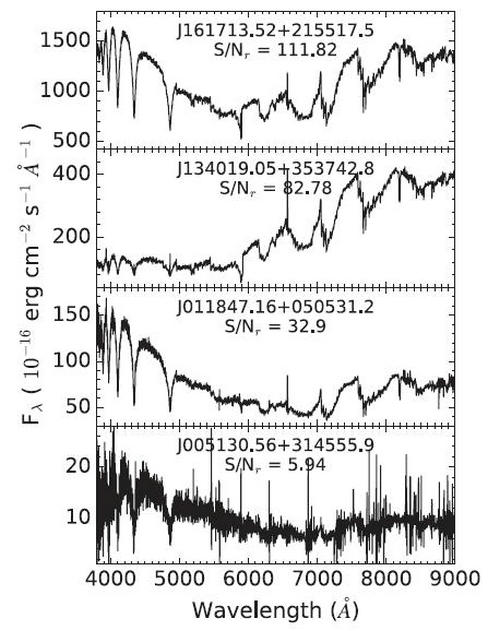Chinese Researchers Find 876 White Dwarf-main Sequence Binaries from LAMOST DR5
White dwarf-main sequence (WDMS) binaries are of important interest for binary evolution studies. The current SDSS WDMS binary sample suffers from serious selection effects, where the WDMS containing cool white dwarfs (WDs) and early-type companions are under-represented. The LAMOST survey is a large large-scale spectroscopic survey which follows completely different target selection algorithms than SDSS, hence opening the possibility for identifying WDMS binaries that help in overcoming the selection effects of the SDSS sample. The WDMS binaries identified from LAMOST DR1 are found at considerably shorter distances and are dominated by systems containing early-type companions and hot WDs (Ren et al. 2014). LAMOST WDMS thus represents an important addition to the current known spectroscopic catalogue of SDSS WDMS binaries. However, the number of WDMS containing cool WDs remains still under-represented, and the number of LAMOST WDMS binaries identified so far is rather small.
Researchers based at National Astronomical Observatories of CAS (NAOC) present an updated catalogue of WDMS binaries from LAMOST DR5, which contains 876 objects and is 8 times larger than our previous DR1 sample. 357 of these systems (40 per cent of the catalogue) are new identifications that have not been published before. Moreover, 339 were observed as part of a dedicated LAMOST survey for obtaining spectra of WDMS binaries photometrically selected within SDSS that are expected to contain cool WDs and/or early type M dwarf companions. They determined the stellar parameters (white dwarf effective temperatures, surface gravities and masses, and M dwarf spectral types) of our systems following a decomposition/fitting routine, and they used the corresponding parameter distributions to analysis the intrinsic properties of the LAMOST DR5 sample. They found that the population of cool WDs remains under-represented. This is most likely due to the fact that cool (Teff < 10 000 K) WDs are systematically fainter and hence associated to lower SN ratio spectra. This increases considerably the probability for our decomposition/fitting method to determine WD parameters associated to large uncertainties and, as a consequence, these objects are not taken into account in our analysis.
The researchers measured the Na I λλ 8183.27, 8194.81 absorption doublet and the Hα emission radial velocities of each object in our catalogue from their LAMOST DR5 as well as SDSS DR14 spectra (when available). They detected 128 systems (76 of which are new identifications) displaying more than 3σ radial velocity variations and hence classify these objects as PCEBs. The close binary fraction we derived is 26 per cent, in agreement with previous studies. By cross-matching our catalogue with the Catalina Surveys we found 57 systems displayed light curve variations. Among these, they identified 16 eclipsing systems, two of which are new, and nine additional eclipsing WDMS binary candidates. By analysing the periodograms calculated from the photometric data, we were able to determine the orbital periods of 30 objects and estimate the orbital periods of 15 additional systems.
The study is published in the monthly notices of the royal Astronomical society.

Figure. Example spectra of LAMOST DA/M binaries identified here in descendant order of SN ratio.